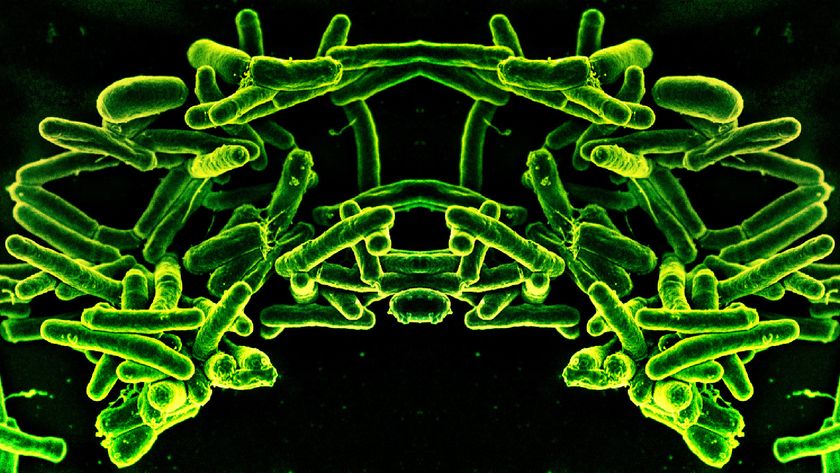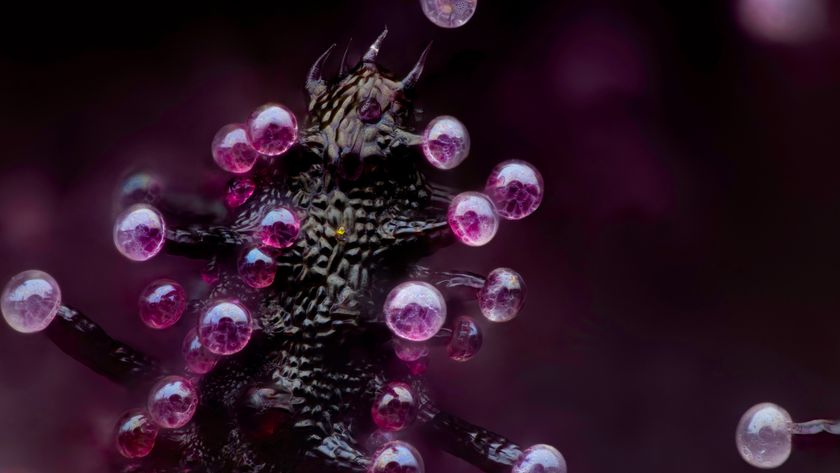Oh, What a Tangled Biofilm Web Bacteria Weave
Give them a suitable surface, some water and nutrients, and bacteria will likely put down stakes and form biofilms. Biofilms are communities made up of many individual bacterial cells held together and stuck to surfaces by a kind of biological glue. These sticky, slimy microbial metropolises wreak havoc when they clog medical devices implanted in the body, such as stents and catheters.
A recent study funded in part by the National Institutes of Health revealed how biofilms cause such clogs: The bacteria form streamers that tangle with each other and trap other passing bacteria, creating a full blockage in a surprisingly short period of time.
Researchers at Princeton University used time-lapse microscopy imaging to monitor fluid flow and biofilm formation in curvy, narrow tubes. Unlike many previous studies, these experiments more closely mimicked real-life conditions, using rough rather than smooth surfaces and pressure-driven flow rather than nonmoving or uniformly flowing fluid.
The researchers tagged bacteria known to be common contaminants of medical devices with a green fluorescent dye. As the bacterial cells flowed through the microscopic channel, they attached to the inner wall, where they began to multiply and form a biofilm (seen in green in the movie above). The buildup of this biofilm only modestly affected the rate of fluid flow through the channel.
Forty-three hours into the experiment, the researchers began flowing bacteria tagged with a red fluorescent dye into the channel. They found that, after about 50 hours total, bacteria on the walls of the channel shed some of the sticky substance that holds them together, creating thin streamers that rippled in the liquid and that eventually tangled to form a sievelike mesh in the channel. Some of the red-labeled bacterial cells got stuck in the mesh, creating an even-larger web of biofilm streamers (seen in red in the movie) that ensnared more cells. Within an hour after the streamers first formed, the entire tube became blocked and the fluid flow stopped.
Additional experiments revealed that some of the genes previously shown to be required for biofilm formation on smooth surfaces were not needed to form biofilm streamers in the flow system used in this study, underscoring the need to study biofilms in realistic environments. The studies also showed that biofilm streamers form in stents, water filters and porous materials similar to those used in wastewater treatment plants, suggesting that the streamers are the likely explanation for why biofilms block up these materials.
Together, these findings could help shape strategies to prevent clogging of medical devices and other materials that are prone to bacterial contamination.
Sign up for the Live Science daily newsletter now
Get the world’s most fascinating discoveries delivered straight to your inbox.
This Inside Life Science article was provided to LiveScience in cooperation with the National Institute of General Medical Sciences, part of the National Institutes of Health.
Learn more:
Making a Microscopic Metropolis from Computing Life
Bugging the Bugs from Findings
Also in this series:














